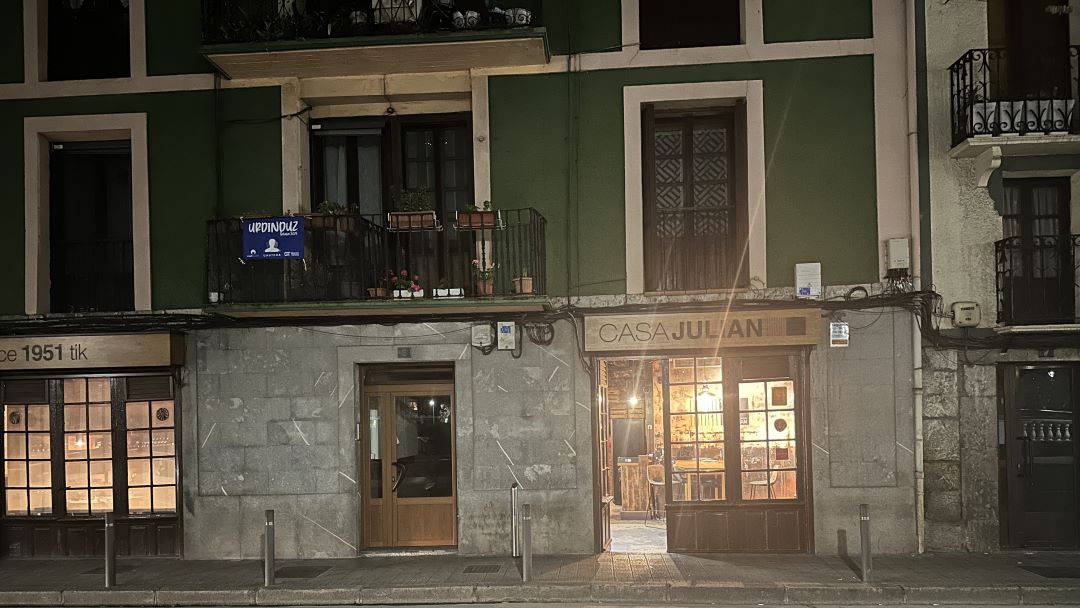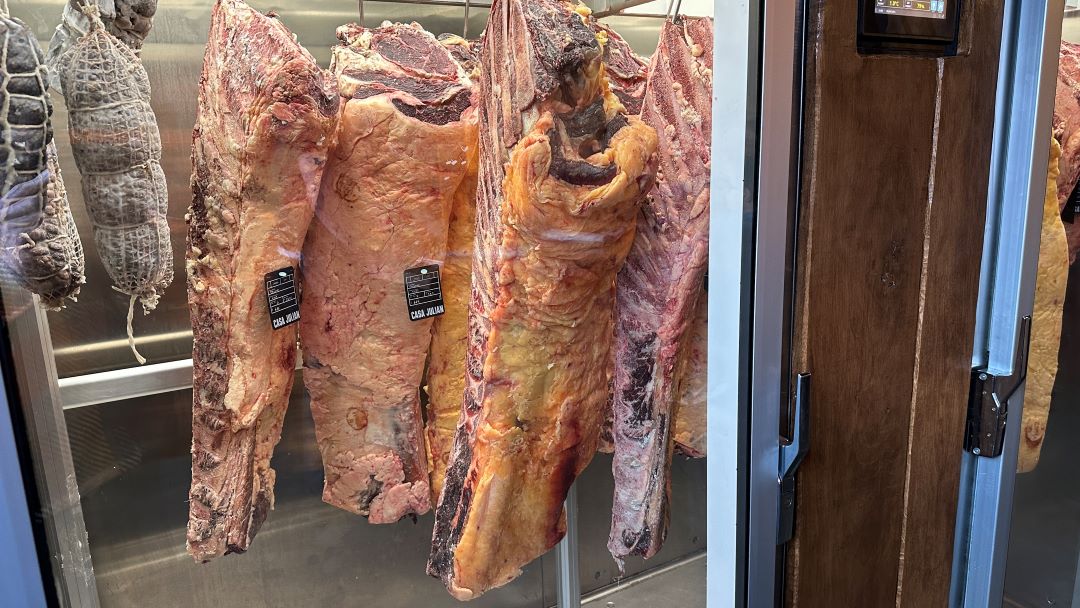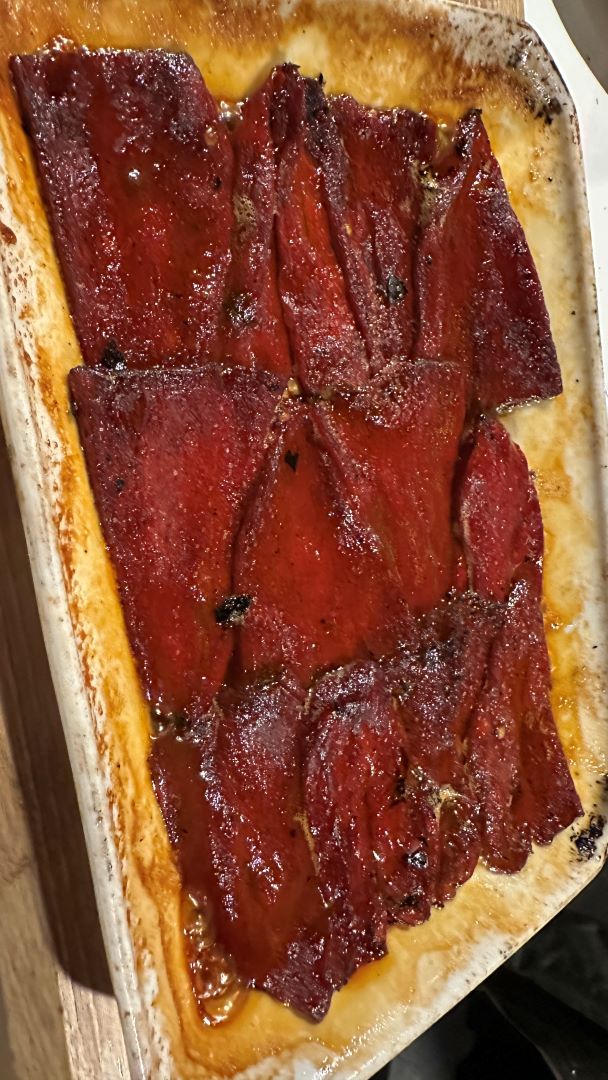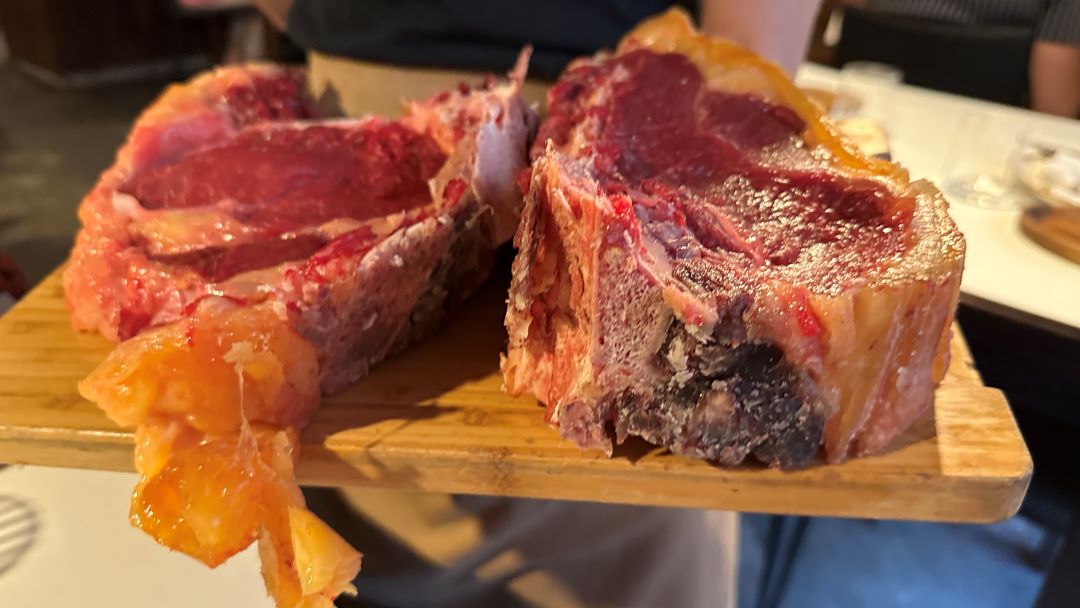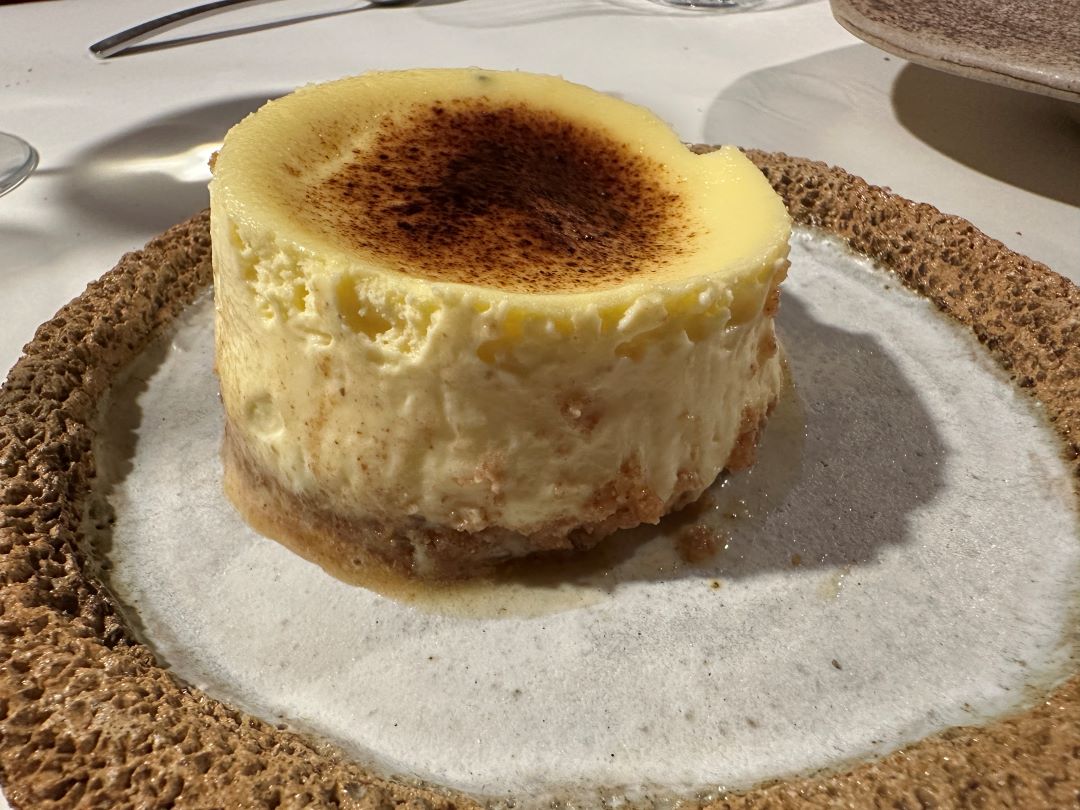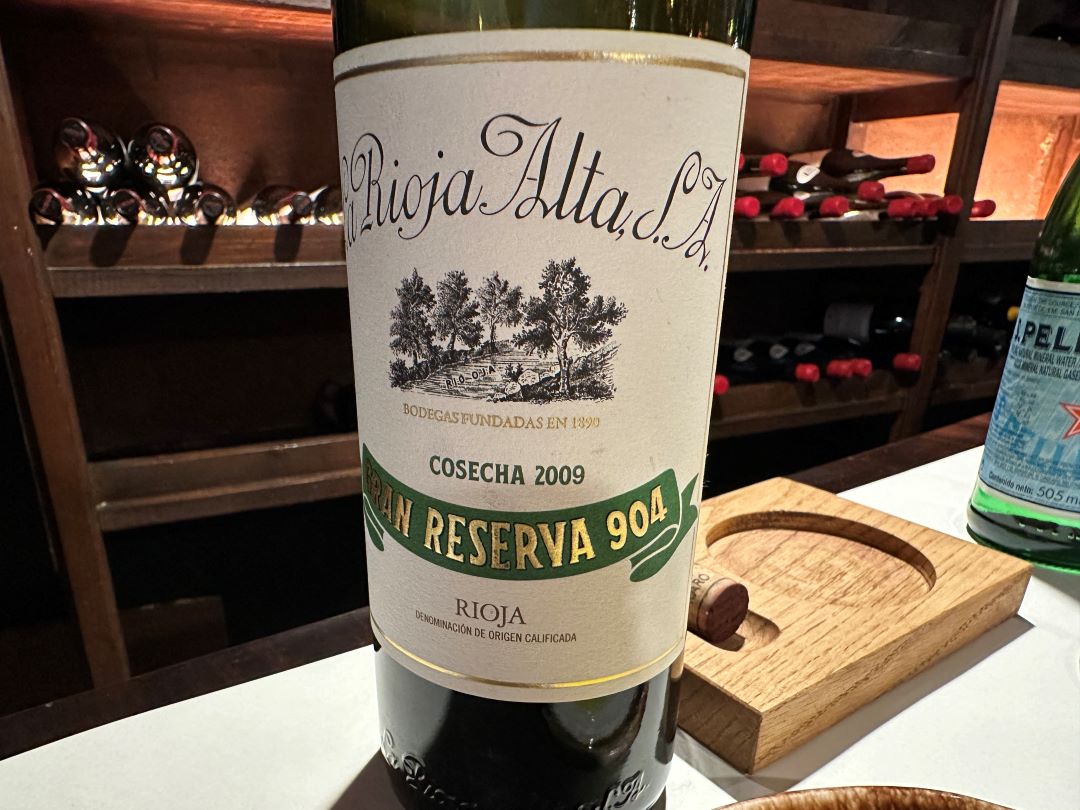Browse using the new Vinous website now. Launch →
Printed by, and for the sole use of . All rights reserved © 2015 Vinous Media
Sta. Klara Kalea, 6
20400 Tolosa
Gipuzkoa, Spain
+34 943 671 417
BY NEAL MARTIN | MAY 16, 2025
The Food:
Piquillo peppers
Roasted leeks
Txuleta (rib steak on the bone)
Etxeko gazta tarta (homemade cheesecake)
The Wines:
2009 La Rioja Alta Rioja Gran Reserva 904 – 96
2010 Recaredo Turó d'en Mota – 95
The Basque region is a foodie’s paradise, a cradle for some of the finest fish, meat and dairy in the world that spawned an endless array of lauded bistros and restaurants. Whilst many cluster in the coastal city of San Sebastián, the hinterland is home to a diaspora of “OMG…You gotta’ check this place out” places to dine where—not unlike Japan—simplicity is the key, as you might have already noticed by the rather banal seeming menu above. During en primeur, I took advantage of Bordeaux’s proximity to check out Casa Julián after an epicure told me, in not so many words, “OMG. You gotta check this place out.” Together with a fellow French gourmand and one French chihuahua, we packed the car and made the two-hour trip to the medieval Basque town of Tolosa.
Casa Julián is a bona fide institution, having started out selling local produce back in 1951. Navarre-born proprietor Julián Rivas later began serving his own Iberian hams to passing businessmen and experimenting with different cuts, even seeking advice from local surgeons about how best to cut the meat. This, in turn, led Rivas to conceive an angled rotisserie that allowed him to retain the meat’s fat. In the 1980s, after apparently much persuading and a promise to pass on his secrets, the restaurant changed hands to Matías who had been running a nearby bar. He opened a sister restaurant in Madrid. Gorrotxategi’s son, Xabi, is now head chef in the original Tolosa branch.
We made a reservation for 7pm. Already, a small queue of pilgrims had formed down the street. Casa Julian is an innocuous-looking restaurant that overlooks the tree-lined Oria River, so unassuming so that you could easily walk straight past. Ushered inside, the first things you notice are fridges housing hunks of hung marbled carcasses. The restaurant’s interior is timeworn, like an old, cherished paperback, so that it seems familiar even if it’s your first time. Wooden tables and concrete floors, paraphernalia on shelves and racks of empty wine bottles, doubtlessly little-changed over the years. The staff is young and friendly, dressed in t-shirts and aprons, most speaking English in case your Euskara is not up to scratch.
The open-flame parilla grill.
The centrepiece of the restaurant is an open-flame charcoal parrilla grill (when making a reservation, see if you can get a table near it). We’re sat in an adjoining room that is absolutely fine, but I prefer being where the action is. The menu itself is simple. I mean, essentially, Casa Julián is a steakhouse. However, you don’t find many steakhouses listed in “The World’s 50 Best Restaurants,” featuring on TV, or attracting gourmands from around the world, as evidence by the dialects around the room on this night.
Roasted leeks.
Piquillo peppers.
From start to finish, the quality of ingredients is stupendous. We keep it simple with grilled leeks and a plate of sizzling, thinly sliced piquillo peppers. The former is great, the latter is sensational, so sweet and packed with flavour that the peppers just melt in the mouth. I don’t think I have ever eaten peppers with this much flavour. We are also presented with a small tin cup of meat juices from our imminent main course.

The txuleta (rib steak on the bone).
Steak is so difficult to photograph—it probably looks better raw rather than when it is cooked!
The main event is the famous txuleta, local dialect for “rib steak on the bone,” perfected by Julián Rivas all those years ago. At the start of our meal, our waitress presents a selection of three raw cuts at the table so that we can choose the size—around 1.0 kg or 1.5 kg, and about 2.5 cm thick. These come from local cows that tend to be a little older and produce more marbling. The wedges of meat glisten before my eyes and I’m already salivating at the prospect. Naturally, the txuleta is served rare with just a salt seasoning, no sauces.
It tastes like heaven.
I had high expectations, and for once, this dish met them. It’s just insanely delicious and worth travelling around the world for.
Etxeko gazta tarta (homemade cheesecake).
And here’s the amazing thing…the meat wasn’t the highlight. No, no, no. We order a cheesecake. With bellies full, we discuss whether to share, though the waitress intervenes and warns that we might regret that decision. She was 100% correct.
It. Is. The. Best. Cheesecake. That. I. Have. Ever. Eaten.
Being of Basque origin, it is burnt on the top, with a very thin crumble at the base. I cannot quite put into words just how ineffably scrumptious it tastes. We call the waiter over to see if we can get the recipe, specifically, what kind of milk they used.
“That’s a secret,” she tells us, smiling. She is probably asked that question three or four times a night.
If the
food has not tempted you enough, be warned that Casa Julián has a superb wine
list with a number of outstanding producers from across most Spanish regions. I
spied deep verticals of Tondonia back to the sixties, likewise, one of my
personal favourites, the Gran Reserva 904 from La Rioja Alta. I
chose the 2009 vintage, as further back the prices escalate a little
quicker, but I had no regrets about my choice. The 2009 is a stunning Rioja.
Pure crushed strawberry, Morello cherries, fireside hearth and terracotta on
the fabulous, exquisitely defined bouquet leaves you instantly entranced. The
palate is so elegant and refined with its cashmere tannins, perfectly pitched acidity
and sumptuous red-fruit driven finish. It is everything I love about Rioja. Such
is the extensiveness of the list that I advise trying to form a small party
like our neighbouring table of Canadian importers had done.
I am
also given a glass of 2010 Brut Nature Turó d'en Mota from Recaredo,
a producer that celebrated its centenary last year. This flagship cuvée comes
from a single-hectare vineyard of Xarel-lo, planted on calcareous soils
back in 1940 in the Alt Penedès and farmed biodynamically. It usually sees 120
months of aging on the lees, this 2010 disgorged in November 2023, a limited
production of 2,581 bottles. The 2010 has an arresting sea-spray-scented
bouquet, with touches of shucked oyster shell and just a very subtle oxidative
note. Later, like my colleague Joaquín Hildago, I picked up a light Vermouth
aroma. The palate is taut and tensile, brimming with tension, quite sharp yet
displaying exquisite balance with a just the slightest smoky note right on the
finish. This is the first time I’ve tasted the Turó d’en Mota, and like my
forementioned colleague, I am very impressed.
Casa Julián will be one of my meals of 2025, for sure. These days, I hanker for uncomplicated and unpretentious dishes using the finest ingredients, soulful food that leaves you feeling sated rather than impressed. If you love your steak, then this should definitely be on your places to go. Located around 28 km from San Sebastián, it’s not much of a schlep.
Casa Julián? OMG…You gotta check this place out.
© 2025, Vinous. No portion of this article may be copied, shared or redistributed without prior consent from Vinous. Doing so is not only a violation of our copyright but also threatens the survival of independent wine criticism.

